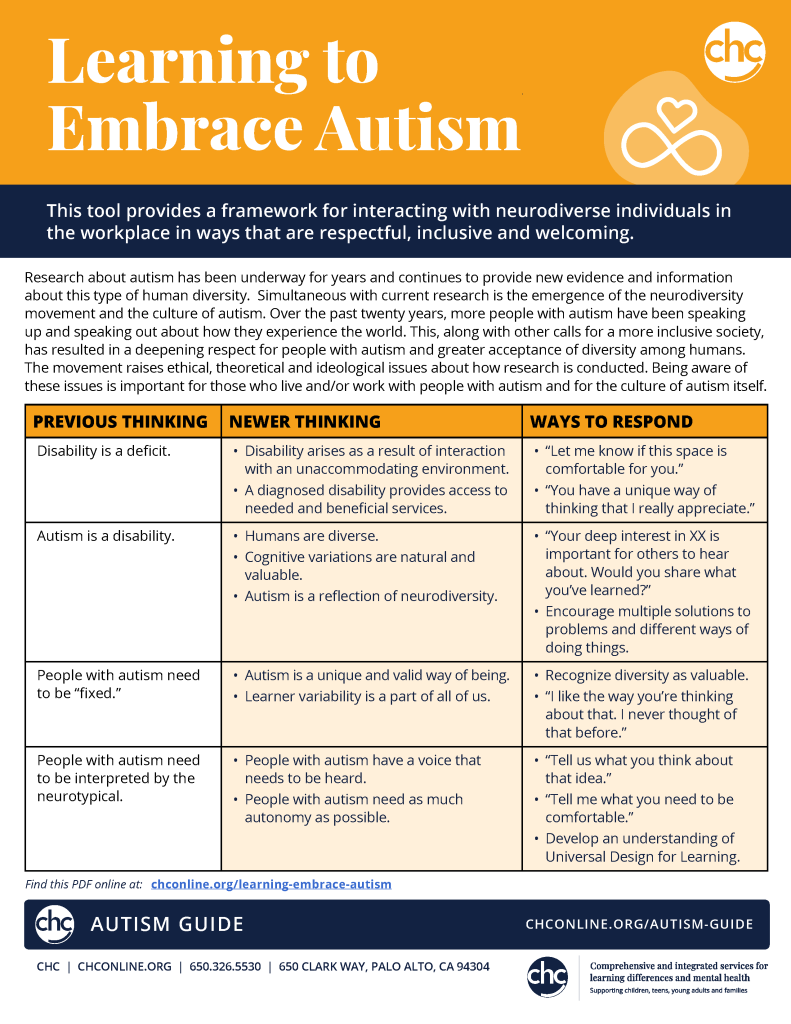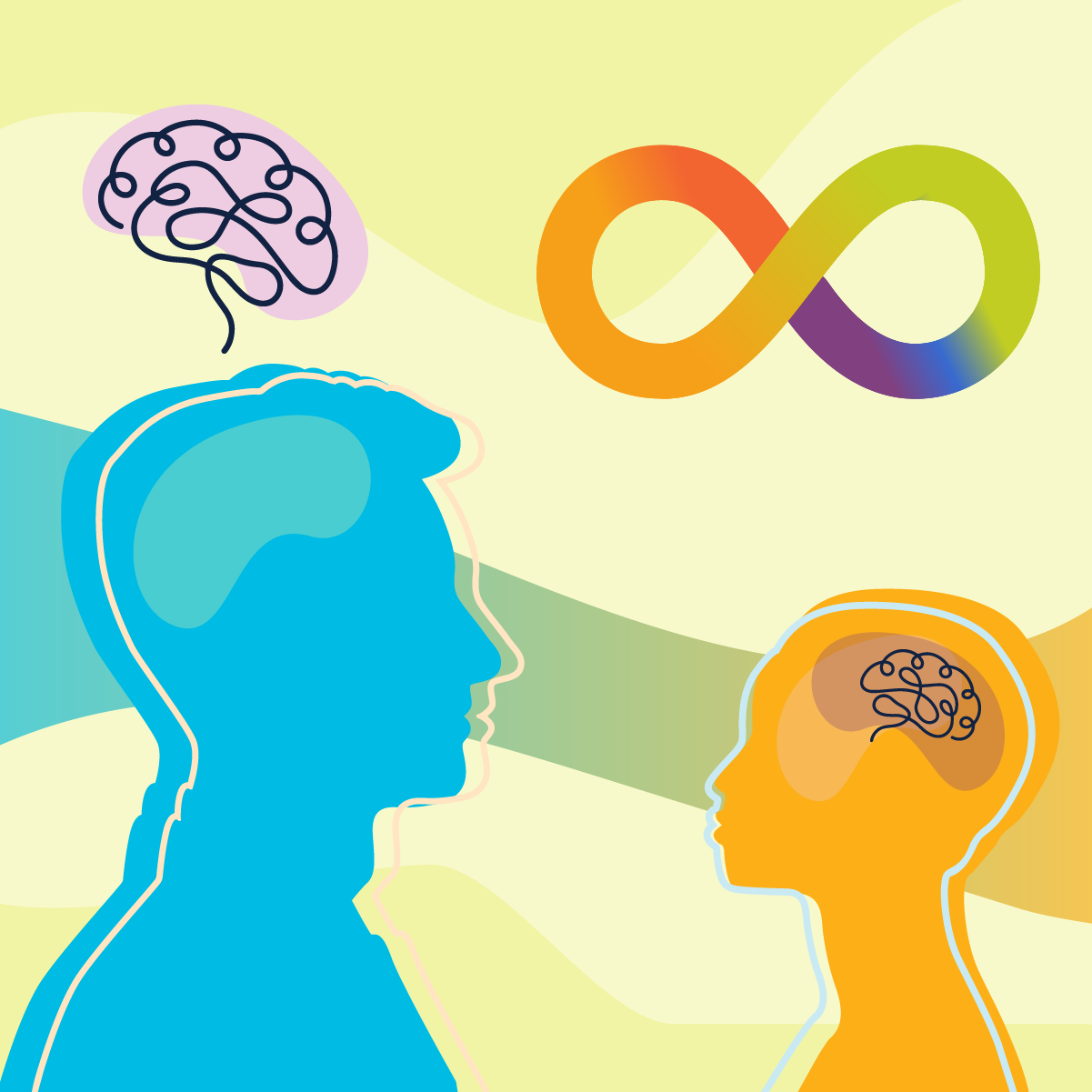This tool provides a framework for interacting with neurodiverse individuals in the workplace in ways that are respectful, inclusive, and welcoming.


written by Micaelia Randolph, EdD, MA
Educational Consultant

reviewed by Melanie Hsu, PhD
Licensed Clinical Psychologist & Clinical Program Manager
Research about autism has been underway for years and continues to provide new evidence and information about this type of human diversity. Simultaneous with current research is the emergence of the neurodiversity movement and the culture of autism. Over the past twenty years, more people with autism have been speaking up and speaking out about how they experience the world. This, along with other calls for a more inclusive society, has resulted in a deepening respect for people with autism and greater acceptance of diversity among humans. The movement raises ethical, theoretical and ideological issues about how research is conducted. Being aware of these issues is important for those who live and/or work with people with autism and for the culture of autism itself.
Download the Learning to Embrace Autism reference tool.
|
Previous Thinking |
Newer Thinking |
Ways of Responding |
| Disability is a deficit. |
|
|
| Autism is a disability. |
|
|
| People with autism need to be “fixed.” |
|
|
| People with autism need to be interpreted by the neurotypical. |
|
|
This resource is part of CHC’s Autism Guide.

Download Learning to Embrace Autism. See CHC’s Autism Guide for more resources.







